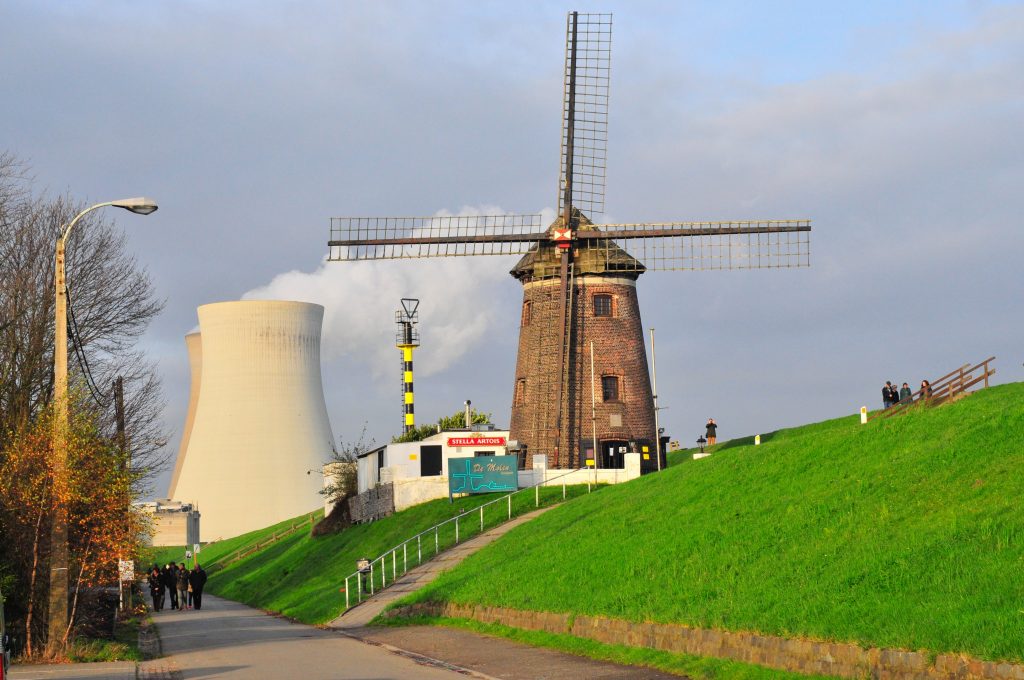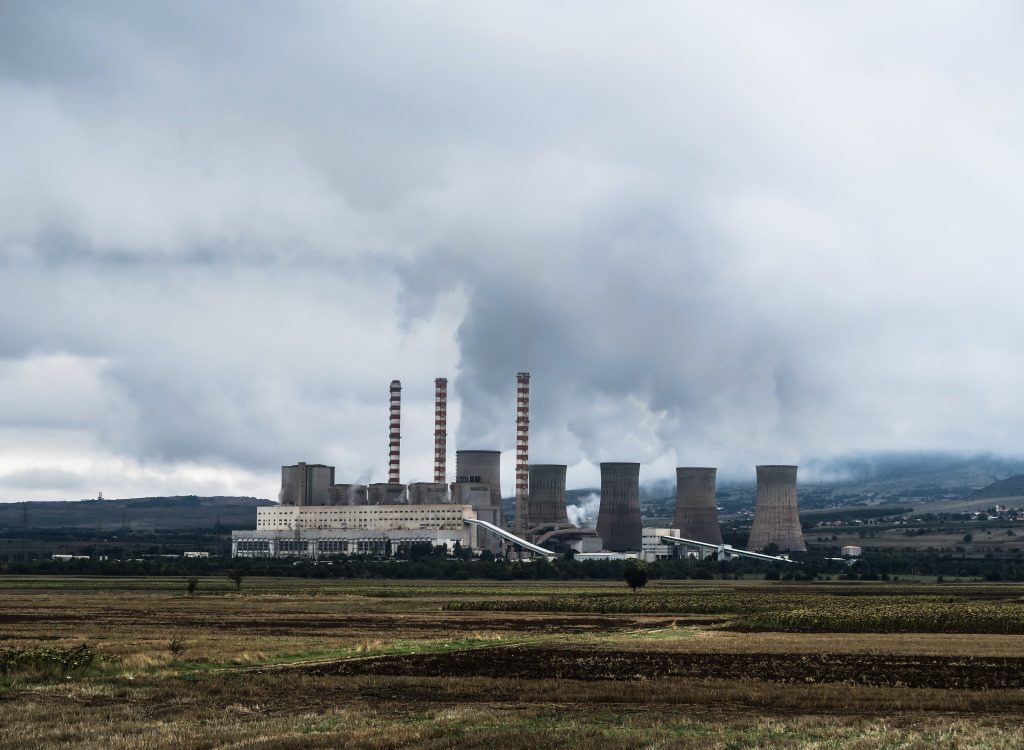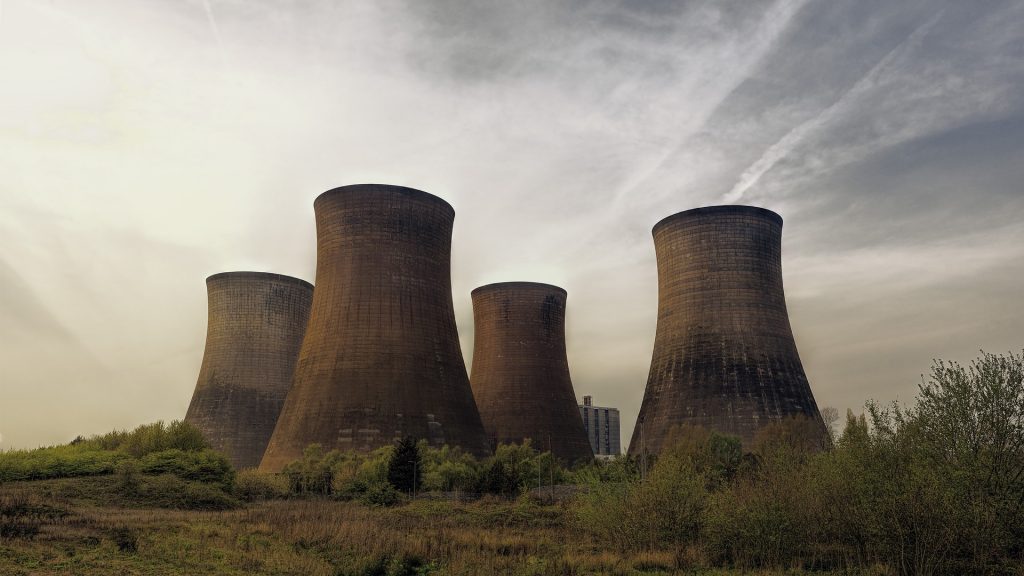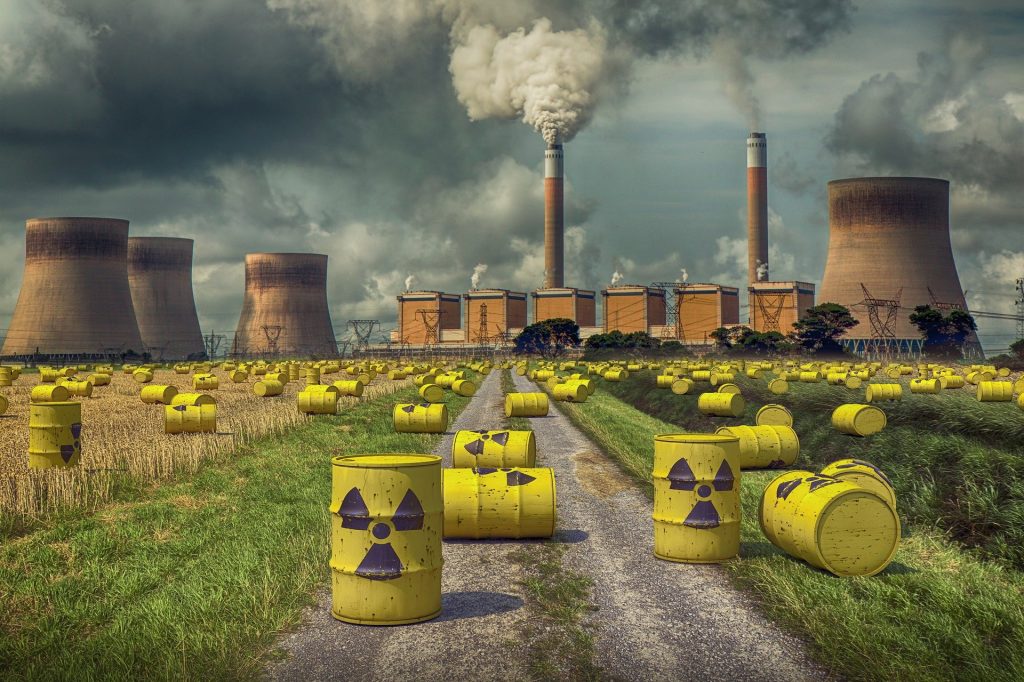One of the most pressing environmental issues nowadays is the dramatic climate change caused by global warming.
Backed by nuclear energy statistics, many scientists believe that the solution to this problem is reducing carbon emissions, which can be achieved by replacing coal power plants with nuclear power plants.
However, this idea is plagued with controversies.
Even though nuclear energy emits zero carbon into the air, many people believe that the long-term health problems it can cause in the future still outweigh the benefits.
Hopefully, this article will shed some light on the truth about nuclear energy and help resolve many debates on the subject.
Top Nuclear Energy Facts: Editor’s Choice
- Nuclear power plants generate 20% of electricity in the US.
- Over 90% of energy remains in used nuclear fuel.
- An estimated 0.07 individuals will die per terawatt-hour because of nuclear energy.
- The average capacity factor for nuclear plants is 93.4%.
- Coal plant waste is 100 times more radioactive than that of nuclear plants.
- Every year, over 470 million metric tons of carbon is avoided through nuclear energy.
- Roughly two million people were exposed to radiation after the Three Mile Island meltdown.

Nuclear Energy Facts and Statistics
1. Nuclear power plants generate 20% of electricity in the US.
Nuclear power has been used to generate electricity in the US since 1958. In 2019, the nation had 58 nuclear power plants with 94 reactors in 29 different states.
That may sound like many reactors, but one interesting fact about nuclear energy in the US is that it has fewer reactors now than it did in 2013.
Nevertheless, the country’s nuclear power plants were still able to generate electricity at the same capacity when there were 104 reactors in 2013.
So how much energy does nuclear power produce? Even with this reduced number of reactors, nuclear power still generates 20% of electricity in the US.
That’s made possible through power plant upgrades or improvements in capacity.
2. As US nuclear energy statistics reveal, the country’s power plants generate 2,000 metric tons of used fuel every year.
All the nuclear reactors in the US combined generate 2,000 metric tons of used fuel annually. Since the first atomic power plant began operating in the 1950s, the country has produced 83,000 metric tons.
That may sound like shocking information about nuclear energy, but all this used fuel could fit in a football field with less than ten yards of depth, while it’s a small number compared to the waste produced by coal power plants.
3. More than 90% of energy remains in used nuclear fuel.
One of the most interesting nuclear energy facts is something most of us are unaware of. It seems that 90% of nuclear waste can be turned into usable nuclear fuel.
Ultimately, this reprocessing implies that fuel in atomic reactors could produce more energy with less waste.
4. An estimated 0.07 individuals will die per terawatt-hour because of nuclear energy.
One of the facts about nuclear energy that people get wrong is the lethality of working in nuclear power plants. Most people believe that the number of deaths is exceptionally high.
However, an in-depth study of the deaths caused by different energy sources found that nuclear energy will only cause 0.07 deaths per terawatt-hour.
That’s much lower than coal, which is responsible for 24.62 deaths per terawatt-hour. That makes atomic energy death rates 99.7% lower than coal.
To put this nuclear energy information in perspective, suppose a town of 27,000 people is wholly powered by atomic energy; statistically, it would take 14 years for one person to die due to atomic energy.
5. The average nuclear energy plant capacity factor is 93.4%.
One of the most robust pro-nuclear energy facts is that power plants can be productive almost year-round.
A comparison of energy sources’ capacity factors shows that nuclear power plants are at a 92.3% average capacity factor. That means that plants are fully operational and can provide electricity 336 days a year.
A source of nuclear energy has a significantly higher capacity factor than most others – hydroelectric systems are at 41.2%, wind turbines at 34.3%, and solar electric arrays at 24.3%.
That’s because these generators are dependent on intermittent energy sources such as the sun, wind, and water.
6. According to nuclear energy statistics in the US, nuclear plants will run out of uranium in 50 years.
Most think the only concern with using nuclear energy as a source of power is the radioactive waste that comes out after atomic fission.
But another issue with this type of energy source is that it isn’t renewable like, for instance, solar power. It’s estimated that readily available uranium fuel will be depleted in 50 years.
7. Nuclear energy waste amount statistics estimate that coal plant waste is 100 times more radioactive than that of nuclear plants.
Unbeknownst to many, the radiation emitted by coal plants from burning 10,000 tons of coal per day is 100 times higher than the waste nuclear plants release into the environment.
Unlike nuclear power plants, where radioactive waste is managed and appropriately decommissioned, there are no radioactive waste regulations for coal plants.
8. 120,000 tHM of spent nuclear fuel is reprocessed.
An estimated 370,000 tHM of spent fuel was discharged after generating all the nuclear power plant output in the world since the first reactor began providing electricity in 1954.
One-third of this spent fuel, or 120,000 tons HM, was reprocessed, while the remaining two-thirds is currently stored awaiting decommissioning or reprocessing.
9. The cost of generating nuclear energy in 2019 was 7.6% less than in 2018.
The average cost for generating nuclear energy in 2019 was $30.41 per megawatt-hour. That’s a 7.6% reduction compared to 2018.
This cutback is due to reduced expenses in fuel, capital expenditure, and operating costs.
10. According to nuclear energy statistics, only 32% of women support atomic energy.
It’s not surprising that people have opposing views when it comes to nuclear energy. However, the most significant gap in opinion is found between genders.
According to recent nuclear energy statistics, more men than women support the use of atomic energy. To be precise, statistics show that 62% of men support this form of power source, as opposed to 32% of women.

Nuclear Power By Country
11. More than 70% of France’s electricity comes from nuclear power plants.
Having been around for over 50 years, nuclear energy is one of the oldest low-carbon energy technologies. Yet nuclear power generates only 10% of the world’s electricity.
That said, data shows that some countries depend heavily on nuclear energy for their power needs.
For instance, nuclear power statistics estimate that France’s nuclear power plants account for more than 70% of the country’s electricity, while Sweden’s power plants provide more than 40% of its electricity.
12. 12% of the world’s recoverable uranium is found in Kazakhstan.
Nuclear reactors use uranium pellets as fuel. According to statistics about nuclear energy, this fuel’s primary supplier is Kazakhstan, possessing 12% of the world’s recoverable uranium. The country has 50 known deposits and 22 uranium mines.
Interestingly, Kazakhstan doesn’t have nuclear reactors and plants in operation at the moment. All of the country’s mined uranium is exported to other countries as a raw material in the form of uranium dioxide.
13. According to United States nuclear energy statistics, the country has 94 operational nuclear reactors.
Out of the world’s 443 nuclear reactors, over a fifth belongs to the US. That’s a total of 94 nuclear reactors with 94,553 megawatts of net electrical capacity, making the country a world leader in nuclear energy.
France follows with 56 reactors, China with 50, Russia with 38, and Japan with 33.
14. The world’s largest nuclear power plant has a net capacity of 7,965MW.
Currently, the world’s giant nuclear power plant is the Kashiwazaki-Kariwa plant located in Japan. It has a net capacity of 7,965 megawatts with seven boiling reactors.
The first unit reactor began operating in September 1985, while the last unit started in July 1997. In May 2012, the power plant ceased operations following the Fukushima nuclear meltdown in 2011.
The power plant is expected to resume operations by 2021.
15. Russia supplies roughly 50% of nuclear technology.
As a country with nuclear power, Russia uses it to strengthen international relations with other countries. Recently, the state-owned company Rosatom was able to finish Belarus’s first nuclear reactor.
Unlike its competitor in the west, Westinghouse, Rosatom receives lavish financial support from the Russian government, which allows the company to provide generous financing terms.
Westinghouse lost a contract to Rosatom when the latter offered Egypt an $11 billion loan to construct its nuclear reactor.
Mark Hibbs, a Berlin-based atomic energy expert, says that the main concern is that Russia and China will dominate all businesses in the nuclear industry by 2030 or 2040.
Use of Nuclear Energy
16. 33% of Americans think the US should keep existing nuclear plants in operation.
Despite advocates’ efforts to push nuclear energy as a better choice than coal in generating power, the general public still isn’t convinced that it’s a safe alternative, according to statistics against nuclear energy.
In a survey conducted among 2,200 American adults, 33% said the country should keep using the current nuclear reactors, but it should also stop constructing new ones.
Moreover, the survey showed that as many as 21% of Americans think the country should stop utilizing nuclear energy entirely. Only 6% think atomic power should be maximized and promoted.
17. Key statistics of nuclear energy reveal that atomic energy is expected to grow from 2.6 billion kilowatt-hours to 3.6 billion kilowatt-hours by 2050.
In the face of opposition due to safety concerns, it’s easy to overlook just how much potential nuclear power has.
Despite the fears heightened by the nuclear disaster at Japan’s Fukushima Daiichi nuclear power plant, statistics on nuclear energy still say that consumption is bound to grow.
In 2018, worldwide consumption was at 2.6 billion kilowatt-hours; by 2050, it should be 3.6 billion kilowatt-hours.
18. The radioisotope power system will enable Mars rover Perseverance to run for 14 years.
When NASA scientists send out spacecraft for exploration, they use electrical power sources called radioisotopes.
The Mars rover Perseverance is designed to utilize radioactive decay for fuel, and this is one of many promising nuclear energy examples of use.
Plutonium dioxide in the rover will allow it to operate for 14 years. The power system will convert the heat from plutonium’s radioactive decay into electricity.
Engineers are confident that this type of fuel will give the rover sufficient time to send back relevant images of the planet’s landscape.
19. A nuclear energy reactor in the US produces on average one gigawatt of power.
Nuclear energy is known for its zero greenhouse gas emissions. In the US, it accounts for 60% of the nation’s clean energy electricity production. But that’s just one of the nuclear power plant facts worth emphasizing.
Most notable is the amount of electricity it provides the country. A single reactor in the US can produce one gigawatt of electricity; that’s the equivalent of 3.125 million photovoltaic panels or 100 million LEDs.
20. Over 30% of admitted patients are diagnosed or treated using radiation and radioactive materials.
Radioactive material isn’t just useful for providing electricity. It also has groundbreaking applications in medicine.
In fact, radioactive materials are used to either treat or diagnose about a third of admitted patients in hospitals.

Benefits of Nuclear Energy Statistics
21. Every year, over 470 million metric tons of carbon are avoided thanks to nuclear energy.
Nuclear energy is one of the most significant sources of clean energy in the US. It generates an estimated 800 billion kilowatt-hours of electricity and is the source of 55% emission-free electricity per year.
That means that nuclear energy could reduce over 470 million metric tons of carbon. To illustrate, that’s like removing 100 million cars off the roads and streets.
22. Cost-effective statistics of nuclear energy show a $60 billion contribution to the US GDP.
The nuclear industry has an enormous contribution to the economy. It accounts for almost half a million jobs and contributes approximately $60 billion to the US GDP, nuclear energy statistics for the US demonstrate.
Aside from providing jobs, the industry also contributes indirectly to federal and state tax revenues by awarding higher than local average income to people working at nuclear power plants.
Nuclear Energy Accident Statistics
23. 8.4 million people were exposed to radiation in the Chernobyl nuclear disaster.
According to the United Nations, the 1986 Chernobyl disaster exposed almost 8.4 million people to radiation in the Soviet Union.
It’s clear why it’s a prime example of nuclear energy gone wrong in the eyes of many.
The explosion’s damage is so profound that the United Nations believes that severe long-term consequences in the affected regions remain, even after three decades have passed.
24. The Chernobyl nuclear explosion killed 31 people.
According to statistics on nuclear energy failures, the 1986 Chernobyl explosion is the most devastating nuclear accident in history.
The disaster was responsible for the immediate death of 31 people, all workers and first responders.
However, experts believe that the explosion has indirectly caused thousands of premature deaths due to cancer caused by radiation.
25. Nearly 1.2 million liters of radioactive water from the Fukushima Daiichi nuclear power plant might be released into the oceans.
Ten years after the nuclear meltdown on Japan’s east coast, the country’s government is considering releasing contaminated water into the oceans after weighing all the nuclear facts and figures.
The radioactive water has approximately reached 1.2 million liters. Currently, the contaminated water is used to cool down the power plant to avoid another meltdown.
The water is stored in large tanks, but it’s estimated that all tanks will be full by 2022.
26. Approximately two million people were exposed to one millirem of added radiation following the Three Mile Island meltdown.
The partial meltdown in Three Mile Island has left citizens wary of nuclear accidents in the US.
Despite the concerns, statistics show that the two million people who lived around the plant were exposed to radiation of only one millirem.
To illustrate how minuscule the amount of radiation exposure is, a chest X-ray exposes a person to about six millirems. Furthermore, there were no deaths or physical health concerns recorded because of the meltdown.

Nuclear Energy Safety Statistics
27. Exposure to 100 millisieverts has a clear link to cancer.
In the aftermath of Fukushima Daiichi’s three reactors’ meltdown in 2011, more than a hundred thousand residents of nearby towns were evacuated.
Nine years after the disaster, the Japanese government began reopening towns with low radiation levels in the environment.
But how much is “low radiation levels?” Although it’s challenging to determine what radiation levels can impact human health, statistics found that exposure to 100 millisieverts has a clear link to cancer.
28. The Three Mile Island partial meltdown in 1979 halted the construction of nuclear power plants in the US for 30 years.
Over 40 years after the Three Mile Island nuclear power plant’s partial meltdown, Americans are still divided on where they stand concerning atomic energy.
Citizens are wary of nuclear energy even though no direct or indirect deaths were reported due to the partial meltdown radiation leak.
This fear has caused a cessation in nuclear power plants’ construction in the US for over 30 years.
Key Takeaways
Based on historical accounts, it appears that nuclear energy may address the world’s energy shortage problems in the next decades.
However, advocates of this energy source must address one of the most crucial nuclear power facts: proper waste disposal of highly radioactive materials.
Moreover, governments should have safety measures and protocols for dealing with emergencies such as meltdowns and explosions.
With these issues out of the way and optimal use of nuclear energy statistics, atomic power can finally gain a solid foothold.
Frequency Asked Questions
There are around 440 nuclear power plants spread across 30 countries. The United States has the most reactors, boasting more than 90 facilities. France, China, and Russia are the other large players in nuclear energy.
Regardless of concrete nuclear facts and benefits, individuals and organizations that oppose atomic energy point out that nuclear power’s biggest problem is disposal. The spent fuel in nuclear reactors is highly radioactive, and exposure to this waste could pose health problems like radioactive poisoning and cancer.
According to US nuclear energy statistics, the US remains the world’s largest producer of nuclear power. It accounts for more than 30% of the world’s generated electricity from nuclear energy throughout the country’s 94 reactors.
The US has 58 power plants with a total of 94 reactors located in 29 different states. Some power plants have two or three reactors.
Nuclear facts show that it is considered the most efficient energy source the world has today. It has a 93.4% capacity factor, which can provide electricity for 336 out of 365 days. Solar electric arrays only have a 25.1% capacity factor, while coal only has a little over 50%.
The primary fuel used in nuclear power plants is uranium. Scientists believe that readily available uranium will be depleted after 50 years.
Statistics on nuclear energy reveal that the US is the most significant atomic energy user for generating electricity for its 29 states. That’s 20% of the country’s total electric consumption. However, France has the most extensive use for nuclear energy worldwide, accounting for more than 70% of the country’s electricity.
The majority of countries around the world don’t use nuclear energy. Some examples are Australia, New Zealand, Brunei, Singapore, Costa Rica, Egypt, Denmark, Ecuador, Israel, Greece, and Haiti.
According to nuclear energy statistics and data, Spain and Switzerland are the two countries that plan to phase out atomic energy use in their respective countries. Switzerland has already started its gradual shift from nuclear energy to reusable energy following the public’s vote against nuclear power. Spain, on the other hand, intends to cease the operations of its nuclear reactors by 2035.
- Caspian News
- DW.com
- EIA
- EIA
- Energy.gov
- Energy.gov
- Energy.gov
- Gallup
- History
- IAEA-PRIS
- International Atomic Energy Agency
- Morning Consult
- NASA
- National Geographic
- NEI
- New York Times
- NRC
- Our World in Data
- Our World in Data
- Power-Technology
- Statista
- The Environmental Magazine
- The New Yorker
- United Nations
- Vox
